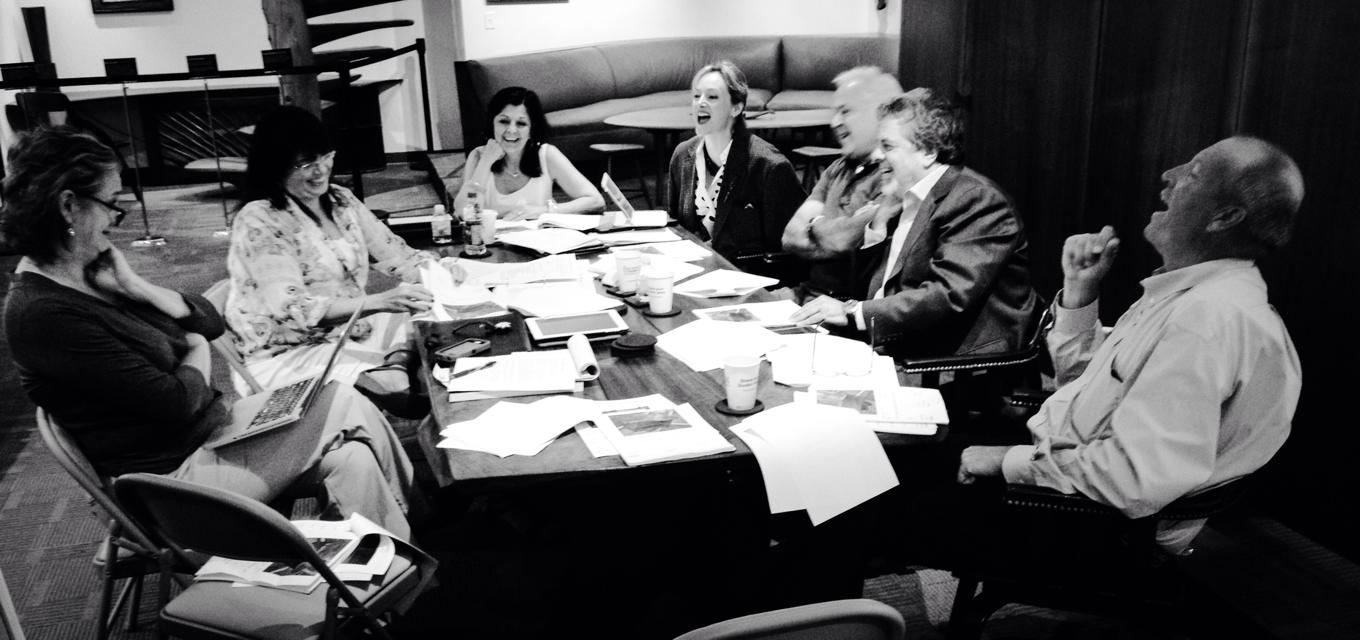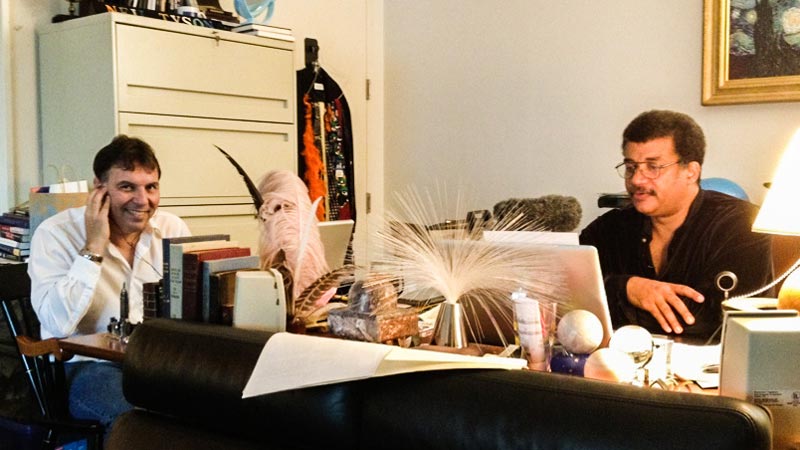
Expert Insights: Accessibility & Translations
Samantha Diamond, CultureConnect’s CEO, sat down with Stasha Boyd, Co-founder and Creative Director of Q Media Productions to learn the secret sauce for producing award-winning audio productions. With over 15 years and 75 tours under their belts, Stasha and her team are experts in producing mobile guide media for museums, galleries, visitor centers and national parks from the Mount Rushmore Memorial to the Kennedy Space Center Visitor Complex to the Kenai (Alaska) National Wildlife Refuge.
Stasha gave us the skinny on Q Media and their experience producing language translations and serving accessible audiences, two crucial specialities for museums seeking to more fully serve their public audiences.
I must confess, I love an origin story – what inspired you to start Q Media?
In 2001, shortly after 9-11, my husband Mike Lutz [Q Media’s Co-founder and Technical Director] and I were visiting an airplane museum in Florida. It didn’t have an audio tour and only basic gallery-card information. Mike (an informal student of aviation, particularly World War II aircraft) told me the stories of the planes, pilots, and battles. He shared the effects of these “artifacts” on real people and real events. In the hours we spent in the museum, we soon found ourselves saying, “This place needs one of those audio tours” followed quickly by “Who does that?” Less than a year later, Q Media was launched. A few years later, we created one of the most adventurous and innovative tours we’d produced to date for that same museum, Fantasy of Flight in Polk City, Florida, still one our all time favorites.
We have always been “museum people” and from the time we met in 1995, visiting museums was one of our favorite things to do. We began our careers in arts and entertainment — I acted, wrote and directed and Mike was a musician and audio engineer– which has served us well in our work. I homed in on the effectiveness of the writing and storytelling; Mike focused on the production values and technical expertise.
A big part of your practice is language translation…
Yes! From Spanish to Lakota (and many, many languages in between). We work with professional translators and native speaking voice talent but our key differentiator is that we include native-speaking directors as well. People who also have a deep understanding of the culture being translated into, rather than just translated from.
Translations are not so simple (even with Google Translate at our fingertips). What are some of the most important things to know before starting a written or audio translation project?
Here are my top five things to consider:
- Language does not equal culture. For example, the differences in experience and expectations between a visitor from Mexico and a visitor from Argentina are not remotely the same and go far beyond language. The same is true for a native German and a native Austrian. Obviously, professional translators should be aware of this and work accordingly.
- That said, every translation must honor two cultures/languages: “theirs” and “yours.” The culture that you are translating into deserves as much respect as they one being translated from.
- Translation is an art, not a science. Just because something is grammatically correct or technically accurate doesn’t mean that it is delivering the same emotional experience to your visitor.
- Just because someone is a native speaker, it doesn’t mean they are qualified to be a translator OR a reviewer, proofreader, or editor. Select team members not only for knowledge and experience, but also because they understand that excellent results come from expertise AND teamwork.
- Excellent script translation is critical, but so is achieving excellent performances from voice talent and editors. Translation proficiency alone isn’t enough. In the end, a mobile tour is still a production, a collaborative process that requires specialized skills.
In your 15 years producing multi-language tours, what have you seen as the biggest challenges museums face in these projects?
One of the biggest challenges museum’s face is when one person is either appointed (hired translator? native-speaking staff person? volunteer?) or appoints themselves the last word on an entire translation project. No one person can speak definitively for an entire culture. This applies to languages but also disabilities, regions, genders, etc. We bring together our and our client’s team members who understand and appreciate this and then work diligently to find the best solution to any translation questions.
No one person can speak definitively for an entire culture. This applies to languages but also disabilities, regions, genders, etc.
The next largest challenge is failure to distinguish between matters of taste and matters of fact. A “wrong” word or phrase means the original and the translation don’t convey the same effect or intent. Assuming the first draft isn’t rife with grammatical or definition errors, the singular purpose of review and revision is to improve and refine a good translation, not “correct” it. Unfortunately, in some settings it is often a reviewers first instinct to treat a script review as if they are grading an undergraduate mid-term paper.
Sooooo, how do you manage stakeholders into a productive process?
The solution to this particular challenge is leadership on the part of the client, the creative director, and the project manager. It is the role of team leaders to recognize behaviors that diminish effective teamwork and then coach individuals towards what we call “spiraling up,” where every member’s job to support the other to achieve outstanding results. Sometimes, this means being a moderator, getting on the phone (or web meeting) with what we’ve dubbed “dueling experts” to help them sort through differences of a translation you may not understand. Other times, it means being a referee, looking at the suggestions of both sides and determining which one is going to best convey the organization’s overall interpretive mission and goals, again, in a language you may not speak.
While accessibility is a hot topic in museums today, you’ve been working with and for these audiences for a long time. What inspired you to focus on this community?
Several years ago, during the American Council of the Blind’s Annual Conference, a mentor said to me, “Description doesn’t just let me go to a museum, it allows me to go on a date with my wife.” You see, his wife loved museums but every time they went to one she immediately had to take on the role of describer, unable to engage with the visual art she loved in her own experience. He went on to say that as much as his wife of 20+ years loved him, every now and then BOTH of them wanted to be able to have a “normal” date doing something she enjoyed without her having to “work.” Audio description changes the way people live their lives.
Regardless of the audience, having relationships with the people you serve is important. From professional relationships developed through various advocacy organizations, such as American Council of the Blind, to deeper friendships with people who just happen to live with a disability, we take seriously our responsibility to reach out, ask questions, listen to the answers, and, quite frankly, be the type of people who have a broad, diverse group of friends and acquaintances.
People with disabilities aren’t “special visitors.” They are visitors. Period.
I love the way you frame this on your website “Providing accessibility isn’t about shining a spotlight on a disability. It’s about removing obstacles between your stories and your visitors. It’s about people, not limitations.”
People with disabilities aren’t “special visitors.” They are visitors. Period. They go to museums for the exact same reasons as any other visitor: to experience whatever it is that you offer, to connect with your stories, to experience nature, history, art, whatever.
What kinds of questions should museums ask to achieve this?
For example, our audio description projects kick off by asking “what is the emotional goal for this project?” If your goal is to inspire, then a person who walks out, rolls out, or is guided out should have had the opportunity to be inspired as well.
We also gather diverse groups of stakeholders and ask “If a visitor cannot “see” the soaring vista (either because they avre visually impaired or there is a barrier) what can we do in this project to convey that experience to them? How can we use the tools of storytelling (words, images, sounds) and the technology at our disposal to broaden your/our reach?”
What are some of the challenges museum’s face when developing accessible content?
The number one challenge is not having an accessibility plan with a clear set of goals. The number two challenge is not adequately allocating resources to accomplish those goals. The third is not monitoring the progress of the plan to see if you are achieving those goals. Accessibility programming often requires trade-offs, sacrifices and pragmatism. Money is always an issue; there is only so much and there are always other needs and priorities. But it is crucial– legally and ethically–that clients allocate resources to a broad range of accessibility initiatives, not just in terms of programs, but in training, awareness, outreach, and other initiatives.
Just as architects and exhibit designers incorporate ramps, font size, or other considerations for visitors with disabilities into the initial plans of a building or exhibit, access for people with visual or auditory impairments should be included from the design phase as well. At a minimum, a plan review should be required. Better yet, an accessibility audit should be conducted regularly. Even better, a full accessibility plan, that includes all of the major categories (visual, auditory, mobility, and cognitive) should be developed, implemented, reviewed, and updated annually.
Before we go, if you could pass along a few final words of advice to museums looking to launch an accessible mobile guide project?
First and last, planning, planning, planning. Develop a full plan for 1 – Specialized content development 2 – Software (app) and hardware (devices), and 3 – Experts and consultants.
Software and equipment must be easy to use and perform consistently. Make sure you and your partners test, test, test. In terms of bringing on accessibility experts, consider if they are generalists or specialists. Generalists should have broad knowledge and be able to discuss the laws and current guidelines for all the major disability sectors: mobility, auditory, visual, and cognitive. Specialists will have particular experience and insight within these groups.
Thank you so much for your candor and valuable insights!
My pleasure. I welcome anyone pursuing an audio translation or accessibility project at their museum to reach out anytime.
On-site at the Adkins Arboretum.
Mike Lutz editing with Neil deGrasse Tyson.
About Q Media Productions:
Q Media’s mission is to help story-rich organizations effectively engage their visitors on an emotional and meaningful level. Since 2002, Q Media has worked almost exclusively with museums and other arts/cultural/historical organizations to develop and produce interpretive, multi-language, and accessible mobile media tours.
About Stasha Boyd
Stasha Boyd is co-founder and the creative force behind Q Media’s success. She has personally written, co-written, directed, and/or produced every Q Media project from inception — over 75 tours and counting. As the project producer and project manager, Stasha has ensured every Q Media production has been delivered on time and within budget.
Reach Stasha here: stasha@qmediaproductions.com
Mike Lutz
Mike Lutz is co-founder and the technical force behind every Q Media production lending every Q Media project his technical proficiency and expertise. Mike’s “ear and eye” ensure every production is maximized for the chosen delivery device and exceeds the client’s expectations.
Get in touch with Mike here: mike@qmediaproductions.com





